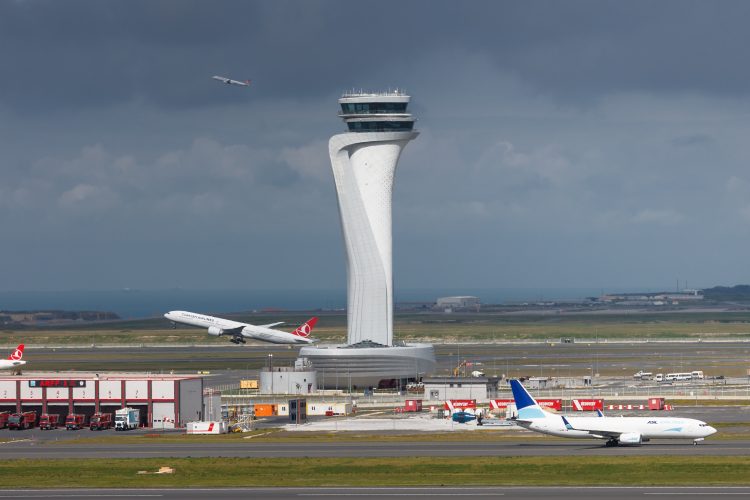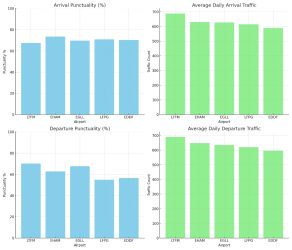Transforming global air traffic: Istanbul Airport’s (IST) triple runway operations
Posted: 21 October 2024 | Erdal Kiziltas | No comments yet
Erdal Kiziltaş, Air Traffic Controller at DHMI, Türkiye’s State Airports Authority, writes about iGA Istanbul Airport’s (IST) complex triple runway system and how this is helping them increase capacity and punctuality.


As one of the foremost hubs in global aviation, Istanbul Airport is setting a remarkable standard with the implementation of its triple runway operations. This innovative approach not only elevates the airport’s strategic status but also revolutionises the concept of air traffic management in Europe. The initiative positions Istanbul Airport at the forefront of technological advancements in aviation, making it a model for other international airports aiming for similar advancements.
Introduction to Istanbul Airport’s expansion
Istanbul Airport, renowned for its expansive capabilities and strategic geographical positioning, has embarked on a significant enhancement of its operational efficiency with the activation of triple simultaneous take-off and landing capabilities. This capability is particularly notable as it is among the first in Europe and reflects practices seen in some of the most advanced airports in the United States.
Istanbul Airport, renowned for its expansive capabilities and strategic geographical positioning, has embarked on a significant enhancement of its operational efficiency with the activation of triple simultaneous take-off and landing capabilities”
Strategic importance of the triple runway system
The implementation of this system significantly boosts the airport’s capacity, allowing more aircraft to manoeuvre through the runways with reduced waiting times. This increase in efficiency is critical for managing the growing volume of passenger and cargo traffic that Istanbul Airport handles. The airport serves as a vital connection point between continents, and enhancing its throughput capacity is crucial for maintaining and expanding its role in global aviation logistics.
Technological advancements in air traffic management
The technology required to support triple runway operations is complex and sophisticated. It includes advanced radar systems, precise navigation aids and robust air traffic control protocols. These technologies work together to ensure that simultaneous operations are conducted safely, maintaining a seamless flow of aircraft on the ground and in the air. Air Traffic Controllers are equipped with state-of-the-art systems that provide real-time data on every aircraft in the vicinity. This information is crucial for making quick decisions and managing the high density of flights, particularly during peak travel seasons. The technology also includes automated systems that help in predicting flight patterns, which is essential for preventing runway incursions and ensuring efficient traffic flow.
The technology required to support triple runway operations is complex and sophisticated. It includes advanced radar systems, precise navigation aids and robust air traffic control protocols”
Economic and environmental impact
The economic benefits of the triple runway system are substantial. By increasing the number of flights that can be handled simultaneously, Istanbul Airport not only boosts its own revenue through higher landing fees and passenger throughput but also significantly contributes to the local and national economy by facilitating an increase in tourism and business travel. Furthermore, the environmental impact of this system has been carefully considered. Efficient runway operations reduce the amount of time aeroplanes spend taxiing on the ground, leading to reductions in fuel consumption and, consequently, lower emissions. This is crucial in the context of the aviation industry’s ongoing efforts to combat climate change and reduce its environmental footprint.
Visual analysis of current traffic and punctuality
Recent data visualisations (Figure 1) underscore Istanbul Airport’s performance in comparison to other major airports, revealing significant insights into its operational strengths:
- Arrival punctuality (%): Istanbul Airport showcases a high punctuality rate for arrivals, which is essential for minimising passenger delays and enhancing overall satisfaction
- Average daily arrival traffic: The airport handles a robust volume of incoming flights daily, highlighting its role as a major player in international aviation traffic
- Departure punctuality (%): The departure punctuality rate is competitive, reflecting the airport’s effective management and operational protocols
- Average daily departure traffic: The high number of daily departures from Istanbul Airport demonstrates its capacity to manage large scales of air traffic efficiently.
These performance metrics illustrate Istanbul Airport’s operational capabilities and set a benchmark for assessing the impact of the new triple runway system.


Figure 1 (Credit: Erdal Kiziltaş)
Challenges and mitigation strategies
Implementing a system that allows three aircraft to land and take off simultaneously presents numerous challenges, primarily in terms of safety and logistical co-ordination. The airport has instituted several mitigation strategies, including extensive training programmes for Air Traffic Controllers and continuous upgrades to its technological infrastructure. These initiatives ensure that the airport remains a safe environment for passengers, staff, and aircraft alike. Moreover, the airport has established strict protocols and emergency response plans to handle any potential incidents that could arise from the increased complexity of operations. Regular drills and simulations are conducted to ensure that all teams are proficient in handling various scenarios.
The global implications
The triple runway operations at Istanbul Airport not only enhance its capacity and efficiency but also have broader implications for the aviation industry worldwide. This development serves as a benchmark for other international airports, demonstrating the feasibility and benefits of such an expansive approach to runway management. By sharing knowledge and experience gained from this initiative, Istanbul Airport contributes to the overall improvement of global air traffic management practices. This collaborative approach helps in setting new standards for safety, efficiency and sustainability in the aviation industry.
Conclusion
Istanbul Airport’s transition to triple runway operations is a landmark achievement that significantly enhances its operational capabilities and positions it as a leader in the global aviation industry. This initiative not only improves the airport’s economic and environmental performance but also showcases the potential for similar advancements at other major international hubs. As the airport continues to expand and refine its operations, it sets a new standard for airports around the world, driving improvements in global air traffic management, safety and passenger experience.


(Credit: Erdal Kiziltaş)
Biography
Erdal Kiziltaş has been working as an Air Traffic Controller at DHMI, Türkiye’s State Airports Authority since 2016. He has acquired valuable skills and developed a strong sense of responsibility during his tenure. Currently, Erdal is pursuing a master’s degree in Aeronautics and Space Sciences at Eskişehir Technical University.
Türkiye is one of the European level’s primary contributors to daily air traffic, particularly in the complex airspace Ankara ACC manages. Erdal expertly handles aircraft flights within controlled airspace to ensure safety and efficiency throughout all phases of flight. Erdal’s readiness to manage high-traffic airspace reflects his confidence in upholding the highest traffic safety and efficiency standards.
After the recent earthquake in southeastern Türkiye, Erdal is now focussing on a critical project centred on the collaborative management of air operations and coordination during natural disasters.
More Like This
Increasing air routes to downtown San Francisco
Heathrow Airport on empowering the next generation’s careers in aviation
Accelerating advanced air mobility (AAM) in Italy
New report from International Airport Review: Securing Airports in an Evolving Threat Landscape
International Airport Review has brought together top voices from across the global aviation security sector, including International Civil Aviation Organization (ICAO), ACI World, Fraport, Qatar Civil Aviation Authority, Winnipeg Airports Authority, and Smiths Detection to examine today’s most pressing airport security challenges and emerging threats.
This expert-led report provides a strategic assessment of the vulnerabilities facing airports in 2025, encompassing cyber-attacks, drone incursions, evolving geopolitical risks, and emerging technologies.
The result is a practical, insightful guide to strengthening airport resilience, anticipating risks before they escalate, and keeping your airport off the front page
Download the report for free and stay ahead of the security curve – READ FOR FREE NOW!
Related topics
Air traffic control/management (ATC/ATM), Airport development

















